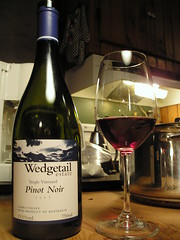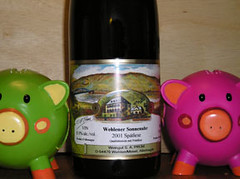Superdrunk XLSeven Guys, Lots of Meat, Sartre and the Cultural Divide
There are few places in North America where one can put 7 grown men together in front of the Super Bowl and of those 7, 2 need the rules explained to them. In fact, I was the only person in the room that had even played the game. There was little talk of strategy around this tv, these boys wanted to know more how the ‘
mauradeur’ position translated into English (safety), and why in hockey the puck has to go completely over the line while in football it merely has to break the plane.
So as the game itself is often overshadowed by the ads (how about that Fed EX caveman ad), our drunken comraderie and lack of real interest in the game was soon overshadowed by some inspired conversation. Of note was a tirade by one of my more revolution-oriented friends about our new Prime Minister Harper’s acceptance speech whereby he ‘thanked God.’ “Just like Bush,’ he sneered. This might strike my American readership as a tempest in a teapot, seeing that for most American politicians and sports heros God seems clearly to have surpassed Mom as the ultimate guiding force behind any real success. But for us Canadians, at least for those of us in front of the tv last night, this brazen mixing of Church and State by our Prime Minister was both new and undesirable.
So as we tried to list what were the truly ‘secular’ states of the world, I was reminded of the roots of this secularism, and the harsh reality that is the void without divinity. Kafka often compared humanity to bugs. 'So what happens when you die,' was the question before the floor? Well I guess you are a dead bug. Hmmmm. Having just turned 40, I decided to put off dealing with this question for another ten years and returned to a spirited conversation as to wether the Cowboy cheerleaders were actually any better than the Raiderettes.
I guess the divide is at times not that wide after all.
Pregame….beer (DAB, Boréale and Grolsch)
1st quarter….. more beer
2nd quarter….. um, more beer
Half-time… wines served alongside choice bits of 5 different animals, tasting notes are approximatations and why do the Stones still insist on playing Start Me Up?
Faugères 2001, Cuvée Jades, Leon Baral ($30.. importation)
… Optimally ripe Syrah and Carignan, soft, well integrated tannins, loads of blackberry with some wonderful spice notes)… superb length
Mendoza, Malbec 2003, Reserve, Lurton ($18..saq)… less concentrated than the Faugeres so took a sip or two to adjust, but very worthy for the price. Typical Malbec notes of black licorice with overtones of dark, ripe fruit.
Cahors 2001, Montplaisir ($13…saq)
…good if you like French style Malbec but not my cup of tea
Margaux 1986, 3ieme Cru Classé, Château Kirwan...probably shouldn’t have been drinking this at this point of the evening but my host insisited on opening it. Still remarkably tannic, and was pretty undrinkable after leaving it alone for half an hour. It slowly opened up to show cooked fruit but little of those delicate floral aromas one so often gets with great margaux. Okay, but my sense was that it was a touch passé date.




